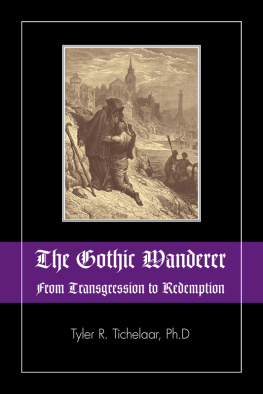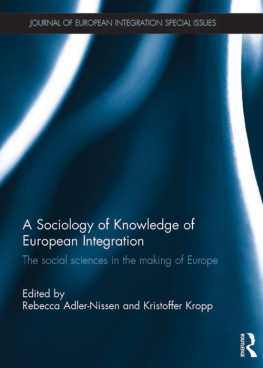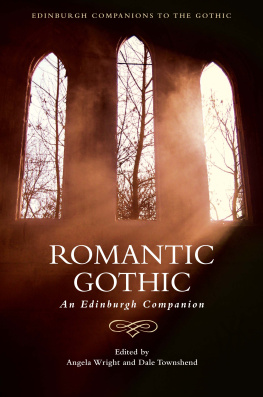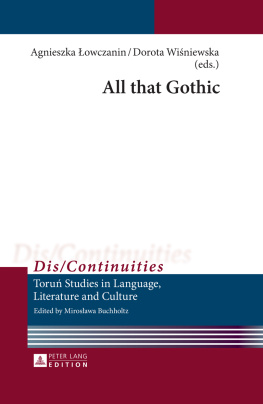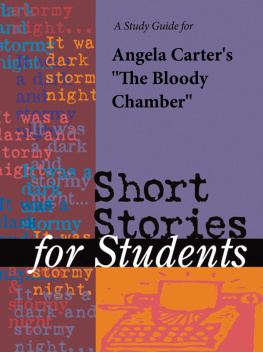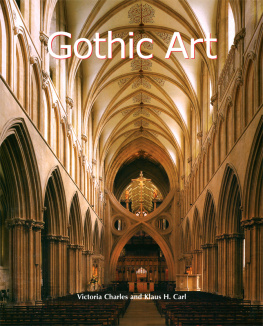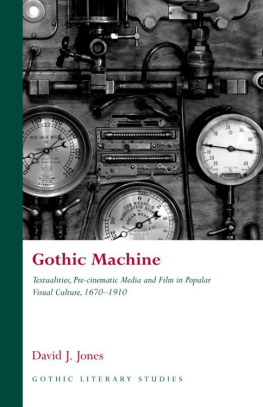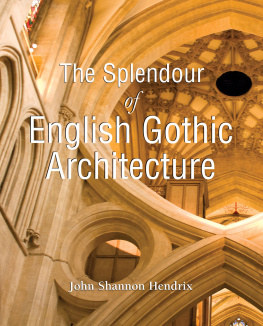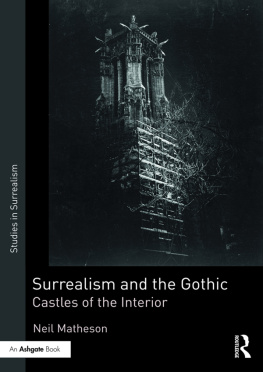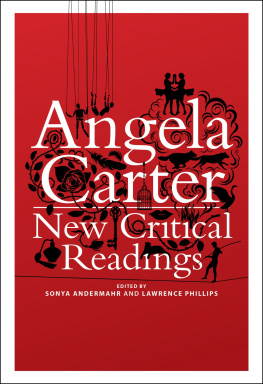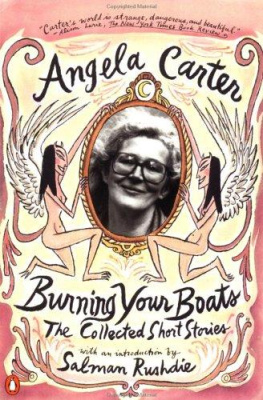DECADENT DAUGHTERS AND MONSTROUS MOTHERS
Decadent daughters and monstrous mothers
Angela Carter and European Gothic
R EBECCA M UNFORD
Manchester University Press
Manchester and New York
distributed in the United States exclusively
by Palgrave Macmillan
Copyright Rebecca Munford 2013
The right of Rebecca Munford to be identified as the author of this work has been asserted by her in accordance with the Copyright, Designs and Patents Act 1988.
Published by Manchester University Press
Oxford Road, Manchester M13 9NR, UK
and Room 400, 175 Fifth Avenue, New York, NY 10010, USA
www.manchesteruniversitypress.co.uk
Distributed in the United States exclusively by
Palgrave Macmillan, 175 Fifth Avenue, New York,
NY 10010, USA
Distributed in Canada exclusively by
UBC Press, University of British Columbia, 2029 West Mall,
Vancouver, BC, Canada V6T 1Z2
British Library Cataloguing-in-Publication Data
A catalogue record for this book is available from the British Library
Library of Congress Cataloging-in-Publication Data applied for
ISBN 978 0 7190 7671 8 hardback
First published 2013
The publisher has no responsibility for the persistence or accuracy of URLs for any external or third-party internet websites referred to in this book, and does not guarantee that any content on such websites is, or will remain, accurate or appropriate.
Typeset
by Carnegie Book Production, Lancaster
I do think that detaching the worm from the rose and displaying it is a useful social function.
Angela Carter
Contents
T here is a lot of dust in Angela Carters fiction. It is curded thickly on the heaped junk in Honeybuzzard and Morriss shop in her first novel, Shadow Dance ().
Littered with allusions, quotations and references drawn from a diverse range of cultural spheres, Carters fictions are full of second-hand furnishings. Worn with use, they bear the ghostly traces of departed texts and objects. At once fetid and fecund, the dust that pervades and invades their interiors gives form to a series of refigured surfaces and transformed textures. A quintessentially Gothic matter, dust tells the story of bodies and things; it is an uncanny register of time, signifying the lingering presence of the past in the present. In its verb form, Carolyn Steedman points out, dust possesses a curious semantic circuitousness: it bifurcates in meaning, performs an action of perfect circularity, and arrives to denote its very opposite. If you dust you can remove something, or you can put something there (2001: 160). To dust, then, means at once to dust away something old (decaying matter) and to dust with something new (powdered matter).
Decadent Daughters and Monstrous Mothers is a book about the dialectical processes of composition and decomposition in Carters work. In its simultaneous insistence on the significance of matter and the deconstructive gestures afforded by its comminution, dust provides an apt (if somewhat grubby) lens through which to view Carters intertextual strategies. In particular, it emblematises the tension between her textual extravagancies and her self-declared absolute and committed materialism her firm belief that this world is all that there is, and in order to question the nature of reality one must move from a strongly grounded base in what constitutes material reality (NFL 70). The idea and substance of dust illuminates a notion of Gothic intertextuality in which the literary particle jostles alongside the particularity of historical context.
Exploring the ways in which Carters work speaks to broader discussions about the Gothic and its representations, this book is especially concerned with analysing her textual engagements with a male-authored strand of European Gothic a dirty lineage that can be mapped from the Marquis de Sades obsession with desecration and defilement to surrealisms violent dreams of abjection. Spending most of its time in the cobwebby and musty interiors of Carters fiction, it will also breathe in the dust of the archive. The literary reflections, notes and false starts scattered through Carters literary journals and manuscripts, recently acquired by the British Library, are brought to light here to offer new ways of thinking about her textual practices, and her use of European Gothic as an aesthetic mode. In what follows, I do not seek to blow the dust away from Carters writings. Rather, I explore how that dust in its jumbled, fragmented and obfuscating traces makes visible new readings of her work.
T here are many people who have inspired my research and helped me to finish this book. I would like to thank the librarians at the Arts and Social Studies Library at Cardiff University and the British Library. Jamie Andrews provided invaluable help with the Angela Carter Papers. I gratefully acknowledge the financial support I received from the School of English, Communication and Philosophy at Cardiff University for research trips to visit this archive. Many thanks too to the staff at Manchester University Press, especially Kim Walker for her patience, and John Banks for his scrupulous copy-editing.
This book has been enriched by the conversation, advice and timely suggestions of a number of friends and colleagues. I am indebted to Mary Orr for the intellectual guidance she offered me when I was a doctoral student in the French department at the University of Exeter, where I first started to work on Angela Carter. Opportunities to present my work at conferences and research seminars have helped me to develop my thinking about Carter and European Gothic. The Angela Carter: A Critical Exploration conference at the University of Northampton provided a particularly stimulating environment in which to work through my ideas about chess and surrealism. Thanks also to Anke Bernau, Anastasia Valassopoulos, Daniela Caselli, Paul Young, Paul Crosthwaite, Irene Morra, Carl Phelpstead, Julia Thomas, Anthony Mandal, Katie Garner and Sarah Gamble, with whom I have discussed my research at various times and in various places. It has been a pleasure to puzzle over Love, The Passion of New Eve and The Sadeian Woman with students in my MA classes on Gothic and Gender and Womens Writing Since 1970 at Cardiff University (Rhys Tranter provided some particularly illuminating chess-related insights). I am especially grateful to Neil Badmington, Claire Connolly, Rob Gossedge, Tomos Owen and Melanie Waters for their incisive comments on parts of the draft manuscript, and to Helen Vassallo for her translations of Baudelaire. A particular debt of gratitude is owed to Stephen Knight for his seemingly boundless intellectual generosity and attention to hyphens.
Lastly, my love and gratitude go to Roberta Munford, Alan Munford, Katherine Munford, Bob Boyce and Tom Melson. And to Tomos, who always has my deepest thanks and admiration.
I would like to thank Susannah Clapp, Angela Carters Literary Executor, and Deborah Rogers, agent to the Estate of Angela Carter, for granting permission to quote from unpublished materials held in the Angela Carter Papers at the British Library. I am also grateful to the Estate of Angela Carter c/o Rogers, Coleridge & White Ltd, 20 Powis Mews, London W11 1JN for permission to use copyright material from


